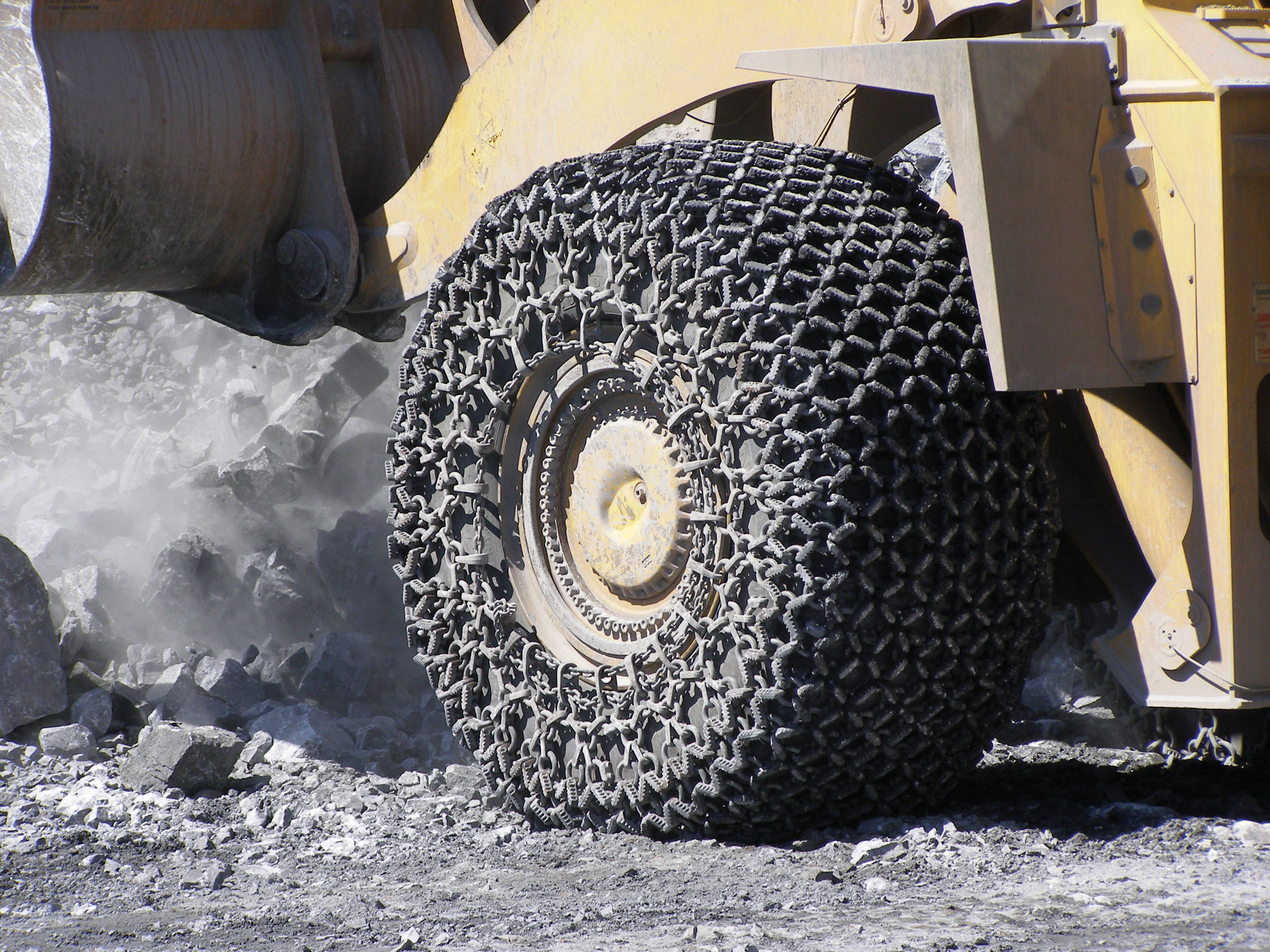
Maintaining tyres is an essential part of minimising operating costs as well as improving machine service life
The importance of tyre maintenance to maximise service life was put under the spotlight a few years ago with the global shortage of
"Maintaining the correct inflation pressure for a working earthmover tyre is the single most important means of maximising tyre life," explained
The system has just been proven to be effective even when tyre chains are fitted. This finding is the result of an independent study by a mining customer of Chilean tyre distributor
"Loader front tyres have been chained to reduce damage to the tyres, the environment means that valve mounted pressure sensors are exposed and risk damage," said Bramley. "Until these tests it had been thought that the chains would act in a similar way to a Faraday cage and prevent the sensor from transmitting the readings to the operator interface inside the cab. The tests prove that TMS can now be used with chained tyres.
"There is so much awareness of the need for pressure monitoring that people are receptive to transfer of the technology from their cars to earthmovers. There are savings potential with cars but the savings for OTR are much more significant in terms of improved wear life, reduced fuel costs and better productivity," she said.
Chain selection Tyre protection chains are a popular method for minimising damage to tyres but selecting the right ones for the application is important to get the maximum benefit. According to chain specialist
The company said that there are around 10 manufacturers worldwide with new competitors from Asia challenging established names in the sector, such as RUD and
"Quartz, silica, dolomite, basalt, iron ore and diamondiferous deposits can all cause higher levels of tyre abrasion," said RUD. "Abrasion resistant chains can help overcome this issue but the density of the mesh required will depend on the exact nature of the work site. The mesh should be self-cleaning and the links specially hardened to resist wear at the points where they interact with the connecting rings." In shales or slate operations, RUD has said that close meshed chain are ideal, while sites where poor traction on haul roads is an issue should consider a more open ring link chain system. Studded links are also available for site where further grip is required.
According to RUD, use of tyre protection chains can double the service life of tyres and also helps to reduce costs by making it possible to use part worn tyres.















